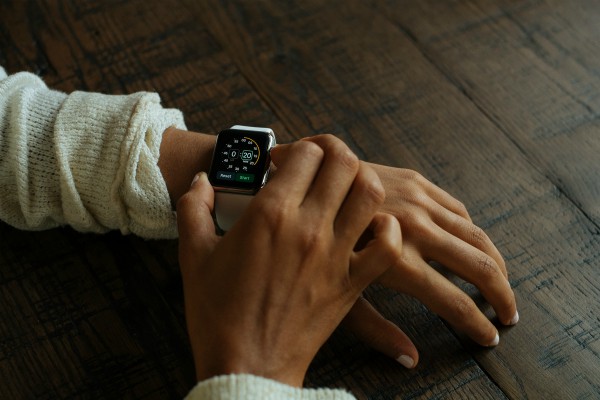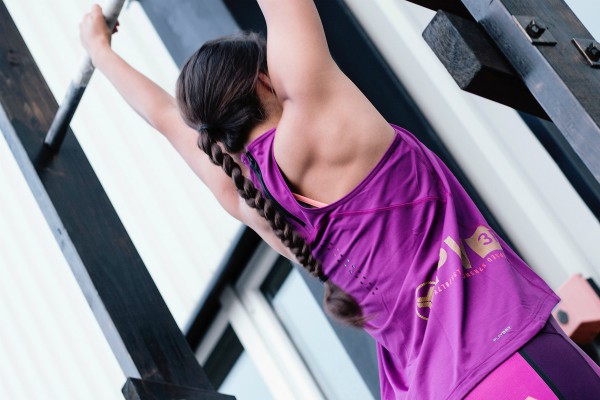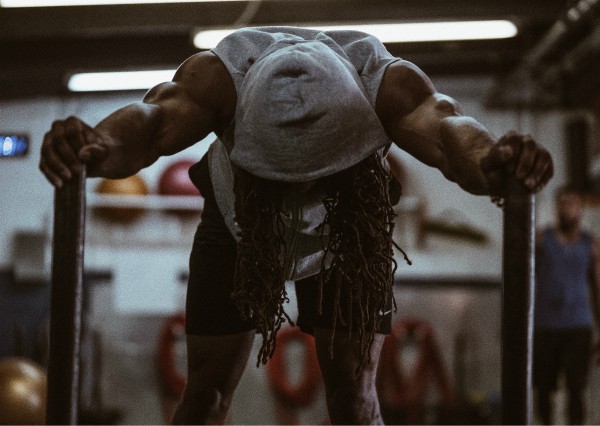Questions you might have: What does HIIT actually mean and is HIIT for beginners even a safe or rational thing? If this fitness acronym makes you retreat into the deepest, coziest corners of your couches, you’re not alone. But high-intensity exercise is something that everyone can do. And while you do have to put in some effort here (the whole high-intensity part), HIIT, or high-intensity interval training, is a special kind of sweat session that packs tons of positives—even for those looking to get back to the couch ASAP.
Let’s get going with our guide to HIIT for beginners. We’ll tell you more about this unique exercise approach: its benefits, drawbacks, and what it can specifically do for you.
HIIT for Beginners, Part 1: What is HIIT Anyway?
So what is the definition of HIIT? High-intensity interval training hides the clues to its meaning in the name.
High intensity is self-explanatory: It’s a very demanding level of exercise that you can’t sustain for long. You can use any type of activity for this—biking, running, aggressive walking, ’80s aerobics—it all works.
If your heart rate is way up and if you’re breathing so heavily that you can’t get out more than a few words, you’re doing it right. And this is why HIIT for beginners can work—it’s relative to your fitness level. What gets your heart rate going at top speed might not do the same for your friend, the ultra-marathoner. And that’s totally okay. You typically do your chosen high-intensity exercises for multiple short bursts that last between five seconds and eight minutes, says the American College of Sports Medicine (ACSM).
These bursts are the interval part: In order to perform multiple max-out efforts one after the other, you need to rest between them. The rests vary in length, but “…are equal to or longer than the speed intervals,” according to ACSM.
HIIT for Beginners, Part 2: Benefits of Interval Training
Now that we know what HIIT is, let’s get into why to incorporate it into your exercise routine.
1. Get fit in less time

Reason number one? Time. Most HIIT sessions last less than 30 minutes, making them ideal for busy people, which let’s be real, is all of us. And the research shows that these short, powerful workouts are equally good for our fitness as longer and slower sessions.
Here’s what some of the science says: In a 2014 study, researchers found that incorporating just three 20-second bursts of high-intensity activity into 10-minute workouts three times per week significantly improved fitness levels and lowered blood pressure over a six-week period. Three bursts of 20 seconds = just one minute of going hard per 10-minute workout. You can totally do that. Even more encouraging? The study participants weren’t athletes—they were sedentary, overweight, regular people. Now that’s HIIT for beginners.
“…if the obstacle keeping someone from exercise is time, then HIIT is the preferred exercise option. I think almost everyone can find a few minutes of their day for a short interval workout,” Dr. Martin Gibala, a professor, HIIT-researcher extraordinaire (and one of the researchers of the study above), and author of The One-Minute Workout: Science Shows a Way to Get Fit That’s Smarter, Faster, Shorter, told the New York Times.
2. Boost your brainpower

An unexpected benefit from HIIT? A better memory.
A team of researchers from the Netherlands examined the relationship between the intensity of physical activity and several cognitive functions, including memory. The study occurred over five years and included 1,927 men and women between the ages of 45 and 70. Translation: It was very thorough.
The results? The participants who exercised more vigorously scored significantly higher on exams measuring cognitive speed and memory than the group who did low-intensity exercise, according to the study. Interestingly, the amount of weekly exercise had no impact on cognitive function. In other words, adding more slow running won’t help you get these benefits.
3. Increase your efficiency

Another less-than-obvious benefit of HIIT backed by science: increased energy levels.
Thirty healthy adults took part in a six-week HIIT program to study the effects of this kind of training on mechanical efficiency. Mechanical what? Mechanical efficiency is the ratio of work output to work input during a physical task. Being efficient at a physical activity means you use less energy, or spend fewer calories, doing it.
At the end of the six-week program, the efficiency of the participants was much higher than at the start. What does that mean? HIIT may improve muscle efficiency and essentially give you the ability to do the same task using less energy. So you have more energy to spend on other important stuff—like finding the best tacos around or power napping. Up to you.
Interestingly enough, the older group was more affected. They saw improvements “approximately two times more than in the young group,” according to the research. Nope, you’re not getting out of HIIT just because you passed 40.
4. Better your body composition

One of the highly-touted benefits of HIIT is its ability to increase fat loss at a faster rate than traditional cardio training. Here’s just one example:
A study of 79 healthy women who underwent a three-month HIIT program showed that the exercise approach significantly improved body composition and lowered blood pressure.
And this certainly isn’t an exhaustive list of what’s out there. As this and other studies have shown, HIIT is connected with a reduction in body weight, waist circumference, and fat mass. And it takes less time than traditional exercise. If you’re looking to get a little leaner, but don’t have a ton of time to work out, HIIT is a great way to get there.
HIIT for Beginners, Part 3: When HIIT Doesn’t Fit
But it’s not for everyone, in every situation, every time. Here are three drawbacks to all-out exercise.
1. HIIT is hard on the body

When you’re going all out, you’re jumping high, sprinting fast, and rowing hard, which has some risks. With this higher intensity comes a higher risk of injury. So now what?
Keep in mind that HIIT for the advanced among us might look a little different than HIIT for beginners. If you have years of solid training under your belt, you can probably go a little harder. Just getting moving again? Keep your intervals shorter and select activities that work for your fitness level. Remember, you just have to get your heart rate up. If you can get your blood pumping hard with quick walking or speeding up the stairs, go for it.
But tailoring your approach to your fitness level doesn’t make the risks disappear. It takes longer for your body to recover from HIIT sessions than other types of exercise, according to the American College of Sports Medicine (ACSM). And that applies to the super-fit too. What happens if you HIIT it too hard? In a word—overtraining.
Overtraining occurs when your body can’t rebuild at a rate faster than the damage you’re doing with exercise. And it can lead to a whole bunch of nasty consequences—more injuries, increased levels of the stress hormone (cortisol), stalled physical progress in your workouts, low mood, high exhaustion, and more. In short, it’s not fun.
For that reason, ACSM recommends starting out with just one HIIT session a week, and then going to two, and making sure you give yourself a few days in between for full recovery.
2. Low-impact exercise has benefits too

While HIIT is undoubtedly a great way of exercising, it’s not the end-all, be-all of getting your sweat on.
Lower-intensity exercise, like walking, keeps your heart rate lower and is easier to sustain over time. It’s called low-intensity steady state (LISS) cardio. And because it’s less intense and easier to keep up, some people find it more enjoyable. It also increases heart health by improving aerobic capacity, reduces injury risk, and lowers stress.
In order to reap the benefits, keep your heart rate low and your sessions long—at least 30 minutes but up to 90.
3. High intensity can mean low enjoyment

Here’s a critical question: What kind of exercise do you enjoy doing the most? If you’re like most people, the answer probably isn’t balls-to-the-wall, maximum effort.
Doing HIIT correctly means going all out, multiple times. Not going to sugarcoat this: It’s a grueling type of training. One study found that using a HIIT protocol “significantly lowered the level of enjoyment.” And that’s a loss for HIIT.
If you aren’t particularly excited about your fitness habit, or if you absolutely despise it, chances are you won’t stick with it long-term. In that case, it’s better to choose something you like rather than burning out and staying put.
HIIT or no HIIT: What works for you
HIIT for beginners is totally doable and packed with benefits. But your ultimate goal is to keep moving for a long time, so figure out what that means for you. It might be three HIIT workouts a week, or it might be something slower, like yoga. The important part is that you keep it up. So get out there, get moving, and have some fun in the process.
To sum it up:
- HIIT is a great type of exercise for all fitness levels with a host of benefits: shorter workouts, fat loss, improved endurance, better memory…the list goes on.
- However, it’s not a magical solution: There’s a lot to be said for other, less-intense types of activity.
- Even for the super-fit, incorporating HIIT one to three times a week is plenty to allow for sufficient recovery.
- Do what you like and you’ll be doing it for a long time.
Your turn: HIIT—an efficient way to fit or something that you totally dread? What’s your favorite way to get moving? Tell us in the comments below.
Disclaimer: This information is not intended to replace medical advice. Check with your doctor before starting a new exercise program and obtain full medical clearance before attempting HIIT. Positive Routines is not liable for any injury sustained while trying these exercises.
Author: Klemen Bobnar
Klemen Bobnar is a freelance copywriter. One of his passions is fitness, and when he’s not deep in the world of copy, he can be found throwing and choking other grown men.

 Claudia Urner says
Claudia Urner says
June 25, 2018 at 5:18 amWant a guide of HIIT for weight lose.
 Chelsey Taylor says
Chelsey Taylor says
June 25, 2018 at 10:25 amThanks for commenting, Claudia! We’ll take that into consideration as we add more HIIT topics to our library. If you want more specific information on tools that can help take the mystery out of HIIT, check out our post on best HIIT apps. These can help you make HIIT a part of your routine so you can get the results you want. Thanks again!
 Hind says
Hind says
October 17, 2018 at 12:46 pmthanks it was very benficial but I have to disagree on the part of low enjoyment. Actually i’m new at this hiit thing but I already find it very cool and I really enjoy it (knowing i was befor a lazy person 0 activity) like sometimes I want to train the next day but I won’t so my body could recover. I really recommend it !
 Chelsey Taylor says
Chelsey Taylor says
October 18, 2018 at 11:01 amThanks so much for the comment, Hind! I think the enjoyment factor is personal, as we’re also pretty big fans of HIIT around here—and enjoy it too! Glad you liked the article and keep up the good work!